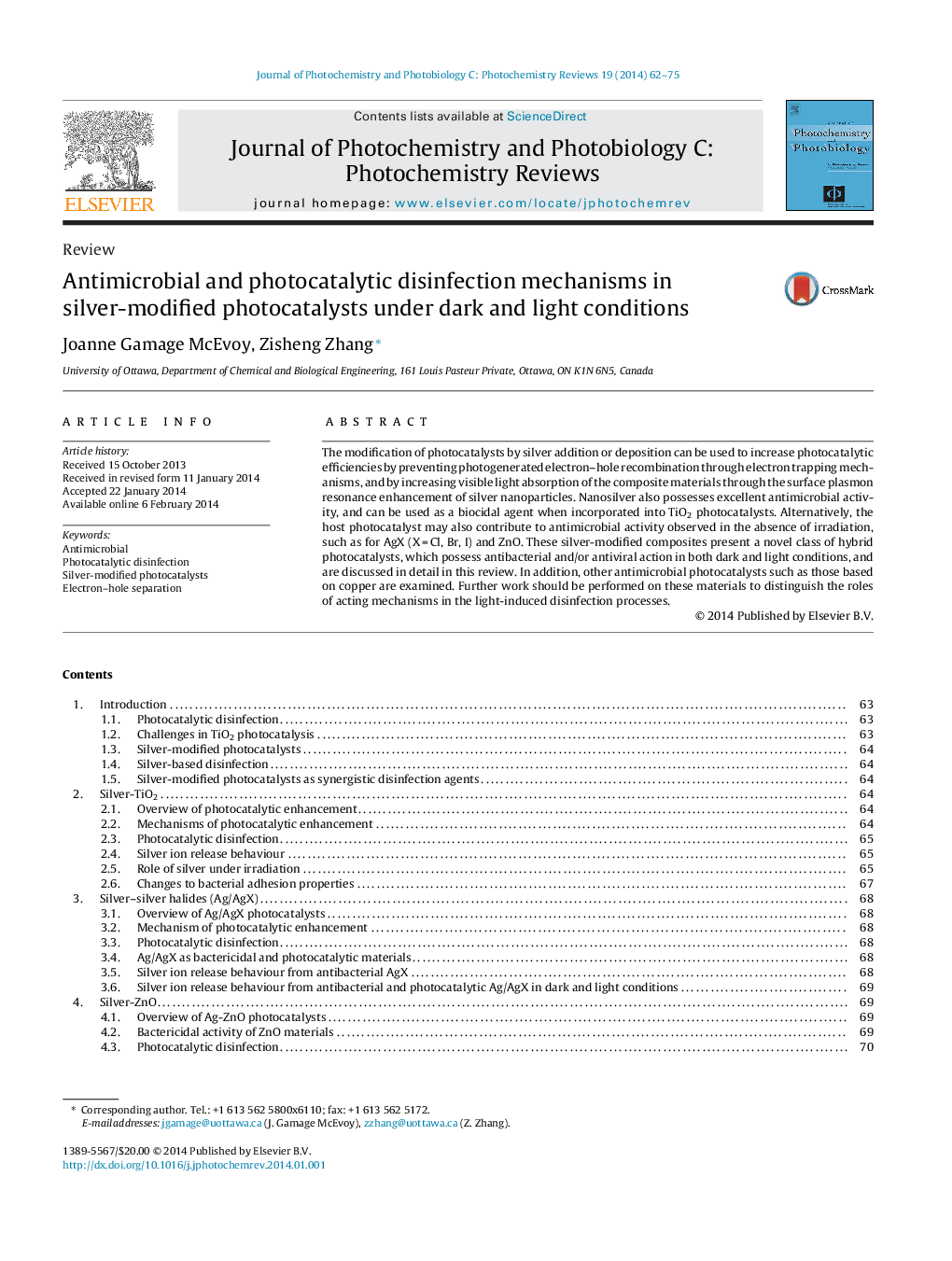| Article ID | Journal | Published Year | Pages | File Type |
|---|---|---|---|---|
| 31433 | Journal of Photochemistry and Photobiology C: Photochemistry Reviews | 2014 | 14 Pages |
•Silver-modification can be used to increase photocatalytic efficiencies.•Silver also possesses antimicrobial capabilities.•Antimicrobial and photocatalytic mechanisms can contribute to disinfection.
The modification of photocatalysts by silver addition or deposition can be used to increase photocatalytic efficiencies by preventing photogenerated electron–hole recombination through electron trapping mechanisms, and by increasing visible light absorption of the composite materials through the surface plasmon resonance enhancement of silver nanoparticles. Nanosilver also possesses excellent antimicrobial activity, and can be used as a biocidal agent when incorporated into TiO2 photocatalysts. Alternatively, the host photocatalyst may also contribute to antimicrobial activity observed in the absence of irradiation, such as for AgX (X = Cl, Br, I) and ZnO. These silver-modified composites present a novel class of hybrid photocatalysts, which possess antibacterial and/or antiviral action in both dark and light conditions, and are discussed in detail in this review. In addition, other antimicrobial photocatalysts such as those based on copper are examined. Further work should be performed on these materials to distinguish the roles of acting mechanisms in the light-induced disinfection processes.
